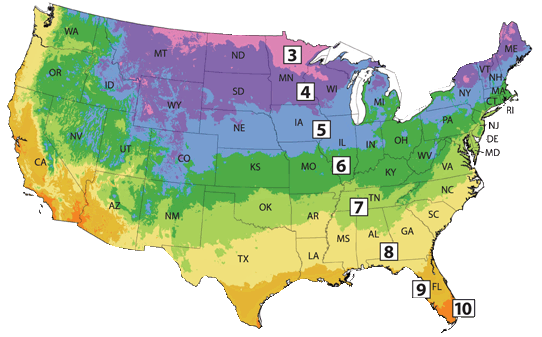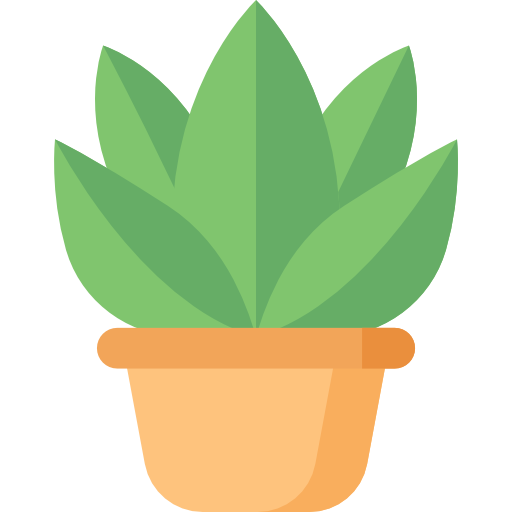'Donkey's Tails Plant' Care and Growers Guide - Everything You Need to Know!
Updated: January 28, 2025

Donkey's tail (Sedum morganianum) is an evergreen succulent known for its long, trailing stems covered in fleshy bluish-green leaves. This donkey-tail succulent gets its name from its tear-drop-shaped leaves, which are loose and crescent in appearance, and the entire stem, which resembles a donkey's tail. The circular arrangement of clumped leaves not only adds to its aesthetic appeal but also serves as a natural adaptation to conserve water in arid environments.
A mature specimen with long stems resembles a string of braids or ropes hanging from a basket or a planter. Because of its cool & distinctive appearance, this hanging Sedum morganianum donkey tail succulent is one of the most well-known. Some of the common names for this vibrant succulent are Donkey's Tail, Lamb's Tail, and Horses' Tail. However, it also gets miscategorized as a burro’s tail.
The donkey tail is often classified as a separate variety from its cultivar, the burro's tail (as in Spanish, the burro is known as a donkey). The burro's tail is also known for its beautiful, smaller, rounded leaves. The foliage of the burro's tail plant is different and unique (we explain more below). Despite the fact that these two succulents physically differ enough from one another to be classified as different varieties, many people mistakenly believe that the donkey's tail and the burro’s tail are the same plant, but they are not.
One of the best parts of the donkey tail succulent is that it is low-maintenance and easy to grow. The rest of this blog article will provide you with all the information you need to know about donkey tail plants.
About Donkey's Tails Plant
These donkey tail plants have characteristic bluish-green or lime-green leaves growing close to trailing stems. Initially, its stems grow upright like an ambitious little sprout; these magnificent donkey tail plants soon trail down and become pendulous wonders that can reach up to four feet in length as houseplants in hanging baskets.
The growth pattern of donkey's tail plant stems is indeed unique, as they grow downward, cascading gracefully. However, it is important to note that the width of the plant, which can reach up to 1.5 feet, is determined by the lateral spread of its foliage rather than the direction of stem growth. This characteristic can sometimes lead to confusion among observers who expect a different growth pattern based on traditional plant structures.
The Fascinating word of Donkey Tail Flowers

- Native to Mexico, the Donkey Tail flowers are small and star-shaped, and they bloom in clusters at the end of the stems. Since they are in contrast with the bluish-green foliage, these look extremely impressive. However, all succulents will not bloom.
- These charming red, pink, or red star-shaped flowers may pop up during late spring or early summer if grown outside; sadly though, indoor blooms are quite rare.
- Donkey Tail flowers are also known for their sweet fragrance, which can attract pollinators like bees and butterflies.
- The tail succulent needs a proper temperature for flowering. Also, make sure that the plants are dry and cool during the winter months.
Growers have found that slightly stressing plants with cooler outdoor temperatures can stimulate their blooms while also providing ample sunlight. Adequate lighting is also a must for the plant to bloom. At least five or six hours of light is a must.
However, it's important to maintain a minimal amount of feeding to avoid endangering the plant. Regardless of whether it blossoms or not, this delightful donkey tail plant has got your back when it comes to safety. It’s non-toxic for humans and pets.
Donkey's Tail Plant Care: Tips and Tricks For Thriving Succulent
The donkey’s tail plant doesn't need much care and can be left alone. They are forgiving and don't mind being neglected. You do not have to be very regular about watering them or taking care to feed and fertilize them.
The only time that you need to be careful is when handling the donkey's tail plant. Because of its delicate foliage, stems and leaves can easily fall or break off due to their smooth, plump texture. Thus, when you get your donkey's tail succulent, ensure that you hang the succulent at a spot where it receives the maximum sunlight, and then you can forget all about it, literally!
Quick Reference

Bloom Season

Flower Color

Growth Rate

Hardiness Zone

Mature Size

Plant Type

Sun Exposure

Toxicity

Watering Needs
Sedum Donkey's Tail Lighting Needs
When growing indoors, the donkey’s tail and burro’s tail plants require at least five to six hours of bright light daily. Also, if you live in a place that is shaded or does not receive enough sunlight, consider using grow lights for artificial lighting. Without enough light, photosynthesis rates drop, trailing stems become thin, colors appear dull, there is an unhealthy look to the plant, and growth is stunted.
 When planted outdoors, the popular Sedum variety donkey's tail thrives in full sunlight to partial shade. Keep a lookout for if your plant is turning grey or if the green color is getting dull; as this indicates that the burro succulent is exposed to too much harsh direct sunlight.
When planted outdoors, the popular Sedum variety donkey's tail thrives in full sunlight to partial shade. Keep a lookout for if your plant is turning grey or if the green color is getting dull; as this indicates that the burro succulent is exposed to too much harsh direct sunlight.
The appearance of a white waxy substance called epicuticular wax on the leaves is also an indication that your dear donkey tail succulent is getting too much sunlight and is protecting itself from the sun.
Unraveling the Watering Needs of Donkey Tail Plants
The donkey tail succulent requires minimal watering. It's important to only water them when the soil has dried out, as overwatering can cause root rot. Succulents, including this one, are prone to rotting if their roots are constantly submerged in moisture.
Seasonal Watering Tips
- During the summer and spring growing seasons, if you live in a warm climate, you can water it once every two to three weeks.
- In the winter, during dormant period, reduce the watering to once a month.
- If you reside in a colder area, the watering frequency has to be much lesser.
As a drought-tolerant plant, this Sedum variety has developed an effective mechanism for storing water in its leaves. Oftentimes, people worry about under-watering their donkey tail plant when they're actually giving them too much water - succulents in particular don't thrive well in damp soil which can lead to root problems.
Overwatering or underwatering is a significant factor in adult & baby donkey tail succulent care. In the case of underwatering, the leaves start to shrivel; and when overwatered, the leaves start to appear mushy and soft. And the smooth leaves plump and healthy stem can drop at the slightest touch.
Ideal Temperature Requirements For Donkey Tail Succulent
The Donkey tail Sedum morganianum is a warm-weather succulent that thrives indoors, in temperatures between 60 and 75°F.
It's a hardy plant that can tolerate a wide range of temperatures, but it's best to keep it away from drafts and direct sunlight.
For outdoor cultivation, the Sedum morganianum is perfect for hardiness zones 10 and 11, but it can also be grown as a houseplant in colder climates.
The donkey tail plant is not frost tolerant. Move it indoors if you reside in a region where temperatures touch freezing, or the winters are pretty cold (below 40 F).You can also shade them with clothes, place them in containers or put them in a greenhouse.

When it comes to humidity, the donkey's tail succulent doesn't need a lot of moisture in the air. This donkey tail succulent is a perfect indoor plant and can handle low humidity and dry air.
The Perfect Recipe: Optimal Soil and Ideal Fertilizers
When it comes to choosing the well-draining soil mixture for your adorable donkey tail plant, you need to be careful! An essential aspect of donkey tail care is the soil. It's like picking out the perfect outfit for a date—you want to make sure everything is just right so there are no surprises later on.
You see, the amount of moisture in the soil can literally make or break your little green friend. Too much water and BAM! You've got root and stem rot faster than you can say "cactus." That's why we at Planet Desert have got your back with our specialized succulent potting mix. This organic substrate has mycorrhizae, which help grow a healthy root system that makes all those trailing/hanging donkey tail plant stems stand tall and proud.

As an okay alternative, you can create your own potting mix by combining equal portions of perlite, coarse sandy soil, and good natural potting, well-drained soil.
And let's not forget about fertilizing! Your donkey tail succulent only needs a tiny bit applied once a year in springtime with a natural fertilizer that has lower doses of NPK (5-10-5). No harsh chemicals here, folks—just pure, natural goodness that lasts longer and encourages nutrient absorption, so your succulent stays happy as a clam.
So, go ahead and give your little guy some love with a good natural fertilizer, because when it comes to soil and fertilizers, through experience, we know what works best!
The Difference Between Burro's Tail & Donkey's Tail Plants
The terms "burro's tail" and "donkey tail" are often used interchangeably in garden or plant stores, despite the fact that there are a few significant differences between the two plants (in Spanish, these are the same animals as the burro, also known as a donkey). Both the plants branch easily and hang down. Both plants grow vigorously and belong to the Sedum family.
The difference between the burro's tail-hanging plant and a donkey tail succulent is the shape of the leaves. While the burro's tail succulent leaves are shaped like teardrops or ovals, the donkey's tail leaves appear more like plump bananas or crescent-shaped. The leaves of the former are curved, while those of the latter are not. While the donkey's tail and burro's tail care are the same.

1
Donkey's Tail Plant (Sedum morganianum)
BUY AT PLANET DESERTkey Features:
- Leaves have bluish-green color
- Leaves have plump banana or crescent shape
- Extremely fragile leaves
- More compact and tightly packed
From top to bottom, on every individual stem of the donkey tail, succulent leaves develop in a crescent or banana. These leaves are extremely fragile, easily breaking off when propagating. In the summer, the light green leaves develop pinkish blooms. As it matures, the donkey's tail sedum makes up to 4-foot-long trailing stems. Learn more...

2
Burro's Tail (Sedum Burrito)
BUY AT PLANET DESERTkey Features:
- Leaves have grayish-green color
- Leaves have tear-dropped or oval shape
- Less fragile leaves
- More elongated and drooping
Each trailing stem of the burro's tail plant is covered in oval or tear-drop shaped leaves. These lovely light green leaves are quite easy to break off the stem, and they have a lovely texture. When fully grown, the plant is 3 feet long (but smaller than those donkey tail plants) and produces numerous trailing stems. Its main distinction from the donkey tail plant is that it has less fragile and more tightly packed leaves. Learn more...
Medicinal Values of the Donkey Tail Plant
Sedum morganianum or Donkey's Tail, is an ornamental succulent plant that not only adds beauty to any space but also offers several medicinal benefits because of its sedum's soothing nature. Its leaves contain compounds that have been traditionally used in herbal medicine for their anti-inflammatory properties, making it a popular choice for its ability to promote wound healing, reduce inflammation, and treat skin conditions such as burns and insect bites.
This donkey's tails succulent has been found to have analgesic properties, providing relief from pain and discomfort. Additionally, Sedum morganianum is believed to have antimicrobial properties that can help fight against certain bacterial infections.
Note: Please consult with a healthcare expert before using this donkey tail plant, as the proper dosage is unknown.
How to Propagate Burro's Tail or Donkey's Tail
The most effective way to propagate donkey and burro tail succulents is to use stem cuttings. Leave propagation is another way, but it takes a longer time. Also, the success rate of stem cuttings is higher than that of leaf cuttings. The method of Sedum morganianum succulent propagation using stems is as follows:
By Stem Cuttings
- Take a couple of stem cuttings with the help of a sterilized cutting tool. Ensure that the stems are healthy.
- The cuttings should be dried and left out for a day. Do not place them in direct sunlight.
- Have a well-drained potting mix ready. Stick or plant dry stem cuttings in the soil. Using leaf cuttings, you need to lay them on the soil.
- It will take about two or more weeks for roots to appear.
- Ensure that the entire setup is away from direct sunlight.
- You need to water the young succulent once every few days.
By Leaf Cuttings
- Select a healthy leaf from the Donkey Tail plant.
- Gently remove the leaf from the stem, ensuring that you have a clean cut.
- Allow the leaf cutting to dry for two to three days until the cut end calluses over.
- Prepare a well-draining potting soil, such as a mixture of cactus soil and perlite.
- Place the calloused end of the leaf-cutting into the soil, burying it slightly.
- Keep the soil lightly moist, but not overly wet, to prevent rot.
- Place the pot in a bright, indirect light location.
- After a few weeks, you should start to see new roots and baby plants forming.
- Once the new plants have developed a few leaves, you can gently separate them from the leaf-cutting and repot them individually.
Common Pests & Problems of Donkey Tail Plant
The donkey tail plant is a beautiful plant with cascading leaves, but like all plants, it can face some problems. The most common issues are:

Yellowing of leaves: A common sign of root rot is the yellowing of leaves, which eventually drop off. These are also signs of a succulent that doesn't get enough sunlight. The leaves will be yellow if your soil has been dry, especially in the winter.
For a few days, leave the donkey tail plant outside in the sun for about six hours each day, and it will heal.
Wilting: Underwatering can cause the succulent to become dehydrated and wilt. To avoid underwatering, make sure to water the donkey tail when the soil is dry to the touch.
Root rot: This is a fungal disease that can occur if the soil is too wet or if it is over-watered. Symptoms include yellowing leaves, wilting, and a foul odor.
To prevent root rot, be sure to plant this donkey tail succulent in well-draining soil and avoid over-watering.
Pests: Donkey tail plants are generally pest-resistant, but they can be susceptible to mealybugs and scale insects. These pests can be removed with a cotton swab dipped in rubbing alcohol. It is important to inspect the succulent regularly for signs of pests and to remove them as soon as possible to prevent them from spreading.
Where to Buy Donkey's Tail Plant?
When it comes to buying Donkey tail plant (Sedum morganianum), unless you have a local nursery that specializes in cactus and succulents; then you may have a hard time finding donkey tail succulent near you. Planet Desert is your easiest and best option if you're looking to buy affordable succulents online and have them conveniently shipped right to your door!
Here is the link to our product page for Donkey Tail Plant for sale. Here at Planet Desert, we have a large selection of over 500 cacti & succulents in stock and we guarantee they will arrive happy and healthy.
Donkey's Tail Plant Quick Growing Reference Guide
| Bloom Season | Summer |
|---|---|
| Botanical Name | Sedum morganianum |
| Common Name | Donkey's tail, lamb's tail |
| Dormancy | Winter |
| Family | Crassulaceae |
| Flower Color | Pink, Red, White |
| Genus | Sedum |
| Growth Habit | Trailing, hanging |
| Growth Rate | Slow |
| Hardiness Zone | 10, 11 |
| Mature Size | 4 ft. long, 2 ft. wide |
| Native Area | Mexico |
| Plant Type | Perennial succulent |
| Propagation | By stem cuttings, leaf cuttings |
| Resistance | Drought tolerant, heat tolerant |
| Soil PH | 6.5, Acidic, Neutral |
| Soil Type | Well-drained succulent potting mix soil |
| Special Features | Unique foliage, easy to maintain |
| Sun Exposure | Full sun, partial shade |
| Toxicity | Safe for humans, friendly to dogs, friendly to cats |
| Watering Needs | Low |
Final Thoughts
Overall, the donkey tail succulent (Sedum morganianum) with its compact and tightly packed bluish-green leaves, adds a touch of elegance to any space. This low-maintenance beauty is perfect for both beginner and experienced plant lovers alike. Just make sure to provide it with bright, indirect light, water sparingly, and use well-draining soil.
Whether you're a seasoned plant enthusiast or just starting your green journey, the Donkey Tail plant is sure to bring joy and beauty to your home or office. Add this cool trailing Sedum morganianum - Donkey tail plant to your collection today.
Frequently Asked Questions
-
Is the Sedum Donkey Tail an Indoor or Outdoor Plant?
The succulent can grow well both indoors and outdoors. All that it needs is sufficient natural light, plenty of it. The plant is the happiest when it is outdoors, receiving a good amount of bright sunlight.
-
Does Sedum Donkey Tail Spread?
Yes, the sedum variety is prone to spread around. Its trailing stems can grow and spread horizontally, creating a cascading effect. This makes it an excellent choice for hanging baskets or as ground cover in rock gardens.
-
How to Propagate Donkey Tail Succulent?
To propagate a donkey tail succulent, you can take stem or leaf cuttings by carefully cutting from the healthy main plant. The leaves on this donkey tail plant are very fragile and break easily, making it ideal for propagating. Make sure the cutting is about 2-3 inches long. After you've taken the cutting, let it dry in a shady spot for a few days until the cut ends calluses over. Once it's calloused, you can place the cutting in well-drained soil, like a cactus mix. Water the soil lightly and keep it slightly moist, but not overly wet. Give it some bright, indirect sunlight, and avoid direct sunlight, as it can scorch the leaves. With time and proper care, your donkey tail succulent cuttings should start rooting and growing into new plants!
-
How to Care for a Donkey Tail Succulent?
It does not take much effort to take care of donkey tail succulents. Ensure that the plant gets adequate light and moderate water. It is ideal to plant the succulent in a hanging container or a basket and let it grow downwards. Another succulent donkey tail care tip is that the plant acts as an excellent cover when grown on the ground. Hence, you can grow it in rockery cracks. If you have a xeriscape garden, you can grow succulents as a helpful addition.
-
How Fast Does Sedum morganianum Grow?
A number of parameters determine the growth rate of the succulent. It depends on the soil, watering, climate, and fertilization. Sedum is a fast-growing plant acting as a ground cover. Sedum spreads about one inch a month, especially during the growing season.
-
Does Sedum Donkey Tail Like Shade?
No, most sedum varieties do not like shade. They can tolerate partial shade, but they are happy and thrive well in full sun. Sedum owners living in cold zones need to be careful to plant this succulent to receive full sun.
-
How to Plant Donkey Tail Cuttings?
Leaf cuttings can be laid flat on the soil mix, while stem cuttings will need to be placed or planted in the soil.
-
Why is my Donkey Tail Shriveling?
There could be several reasons why your donkey tail plant is shriveling. One possibility is that it is not receiving enough water. Donkey tail plants require regular watering, but overwatering can also cause the leaves to shrivel. Additionally, extreme temperatures or exposure to direct sunlight for prolonged periods can also lead to leaf shrinkage.
-
How Often Should I Fertilize My Succulents?
One round of fertilization during the growing season or spring is the best. However, if your soil is not as nutrient-rich as it should be, you can fertilize the succulent every month. Use manure tea as fertilizer.
-
What Are the Lighting Requirements of The Donkey Succulent Indoors?
For the care of the donkey tail plant indoors, simply keep the succulent at a place where there is adequate lighting - the brightest spot indoors, preferably a south-facing window. That's it. You will find your precious blue burrito succulent, growing, and thriving happily.
-
Can Seeds be Used in Propagating Donkey Tails?
Yes, it can be used, but stem and leaf cuttings are the most popular ways.

























